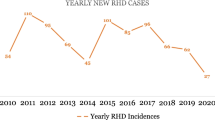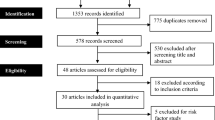Abstract
Understanding the impact of rheumatic heart disease (RHD) has become increasingly important among aging populations around the world, and Korea is no exception. This study was conducted to estimate total annual patient costs associated with RHD in Korea for 2008 using nationally representative data. The subjects were South Korean citizens with RHD (ICD-10 codes I01-I09). The primary information for this study was obtained from claims data compiled by the National Health Insurance Corporation of Korea. Direct medical care costs were estimated using expenses paid by insurers and patients for non-covered care and pharmaceutical costs. Direct non-medical costs were estimated using data on transportation costs for hospital visits and costs for caregivers. Indirect costs included the costs of productivity loss and premature death in RHD patients. The economic burden of RHD in 2008 was estimated at $67.25 million US dollars. The indirect costs amounted to 39.04 % (US $26.26 million) of the total RHD costs. When stratified by age, the costs incurred by the group of patients older than 60 years were US $31.63 million. The prevalence of the disease in the same age group was 791.07 cases per 100,000 people. This study confirms that the prevalence of RHD was highest in patients older than 60 years in 2008. Furthermore, the patterns of disease in South Korea were similar to patterns observed in other high-income countries. These findings indicate that secondary prevention strategies for the early detection of RHD are needed in South Korea.

Similar content being viewed by others
References
Australian Institute of Health and Welfare (2010) Cardiovascular disease mortality: trends at different ages. Cardiovascular series no. 31. Cat. no. 47. AIHW, Canberra
Carapetis JR, Currie BJ, Mathews JD (2000) Cumulative incidence of rheumatic fever in an endemic region: a guide to the susceptibility of the population? Epidemiol Infect 124:239–244
Steer AC, Carapetis JR, Nolan TM, Shann F (2002) Systematic review of rheumatic heart disease prevalence in children in developing countries: the role of environmental factors. J Paediatr Child Health 38:229–234
Lucas G, Triborilloy C (2000) Epidemiology and etiology of acquired heart valve diseases in adults. Rev Prat 50:1642–1645
Soler–Soler J, Galve E (2000) Worldwide perspective of valve disease. Heart 83:721–725
Lee SY, Chun CB, Lee YG, Seo NK (2008) The National Health Insurance system as one type of new typology: the case of South Korea and Taiwan. Health Policy 85:105–113
Kang HY, Yang KH, Kim YN, Moon SH, Choi WJ, Kang DR, Park SE (2010) Incidence and mortality of hip fracture among the elderly population in South Korea: a population-based study using the national health insurance claims data. BMC Public Health 10:230
Health Insurance Review and Assessment service [http://www.hira.or.kr/rb/rbb_english/index.html]. Accessed Oct 2011
Korea Health Panel [http://www.khp.re.kr/English/about_01.jsp]. Accessed Oct 2011
Korea Exchange Bank [http://www.keb.co.kr/] (in Korean). Accessed Oct 2011
Population projections for Korea [http://kostat.go.kr/wnsearch/search.jsp] (in Korean). Accessed Oct 2011
Ministry of Employment and Labor [http://laborstat.molab.go.kr/] (in Korean). Accessed Oct 2011
Drummond MF, O’Brien BJ, Stoddart GL, Torrance GW (1997) Methods for the economic evaluation of health care programmes, 2nd edn. Oxford University Press, Oxford
Ministry of Employment and Labor. Survey Report on Labor Conditions by Employment type in 2008. Available online at www.laborstat.molab.go.kr. Accessed Oct 2011
Oh IH, Yoon SJ, Seo HY, Kim EJ, Kim YA (2011) The economic burden of musculoskeletal disease in Korea: a cross sectional study. BMC Musculoskelet Disord 12:157
Australian Institute of Health and Welfare (AIHW) (2004) Heart, stroke and vascular diseases, Australian facts 2004. Cardiovascular disease series no. 22. Cat. No. CVD 27. AIHW AND National Heart Foundation of Australia, Canberra
Jonathan RC, Andrew CS, Mulholland EK, Weber M (2005) The global burden of group A streptococcal diseases. Lancet Infect Dis 5:685–694
Vuyisile TN, Julius MG, Thomas NS, John SG, Christopher GS, Maurice ES (2006) Burden of valvular heart disease: a population-based study. Lancet 368:1005–1011
Walsh WF (2010) Medical management of chronic rheumatic heart disease. Heart Lung Circ 19:289–294
OECD Health Data, 2009. OECD. Paris. [www.oecd.org/health/healthdata]
National Heart Foundation of Australia and the Cardiac Society of Australia and New Zealand (Chronic Heart Failure Guidelines Expert Writing Panel) Guidelines for the prevention, detection and management of chronic heart failure in Australia (2006) National Heart Foundation of Australia
Korea National Health and Nutrition Examination Survey [http://knhanes.cdc.go.kr/intro/intro03.jsp] (in Korean)
Rheumatic fever and rheumatic heart disease. Report of a WHO Study Group. World Health Organization, Geneva (2004) (Technical Report Series No. 923)
Rizvi SF, Khan MA, Kundi A, Marsh DR, Samad A, Pasha O (2004) Status of rheumatic heart disease in rural Pakistan. Heart 90:394–399
The WHO Global Programme for the prevention of RF/RHE (2000) Report of a consultation to review progress and develop future activities. Geneva, World Health Organization (document WHO/CVD/OO.1)
Tibazarwa KB, Volmink JA, Mayosi BM (2008) Incidence of acute rheumatic fever in the world: a systematic review of population-based studies. Heart 94:1534–1540
Samanatha MC, Janathan RC, Joseph HK, Andrew CS (2009) Rheumatic heart disease and its control in the Pacific. Cardiovasc Ther 7(12):1517–1524
Acknowledgments
This study was part of the research program (to measure the economic burden of cardio-cerebrovascular disease in Korea, application R1006511), financed by the Korea Center for Disease Control and Prevention. In addition, the study used data from the Korea Health Panel, with access made possible by the assistance of Dr. Jung Young Ho, whose assistance we greatly appreciate.
Author information
Authors and Affiliations
Corresponding author
Rights and permissions
About this article
Cite this article
Seo, HY., Yoon, SJ., Kim, EJ. et al. The economic burden of rheumatic heart disease in South Korea. Rheumatol Int 33, 1505–1510 (2013). https://doi.org/10.1007/s00296-012-2554-6
Received:
Accepted:
Published:
Issue Date:
DOI: https://doi.org/10.1007/s00296-012-2554-6




